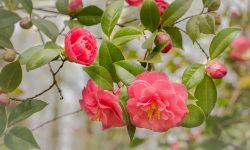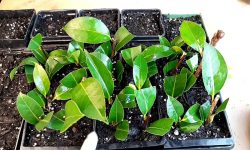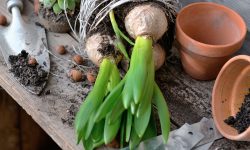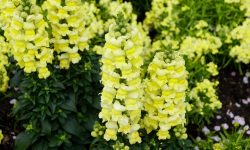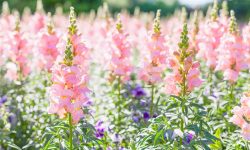Begonias are beloved for their vibrant flowers and lush foliage, making them popular among gardeners worldwide. However, there is often confusion surrounding their life cycle. Are begonias perennial flowers, or should they be treated as annuals? The answer depends on the type of begonia and the climate in which they are grown.
In warmer climates, particularly USDA zones 9 through 11, many types of begonias can behave like perennials. They survive from year to year with proper care. However, in cooler climates, begonias are typically grown as annuals because they cannot tolerate frost. Understanding the specific variety of begonia and your regional climate is the first step to determining their perennial potential.
Different Types of Begonias and Their Growth Habits
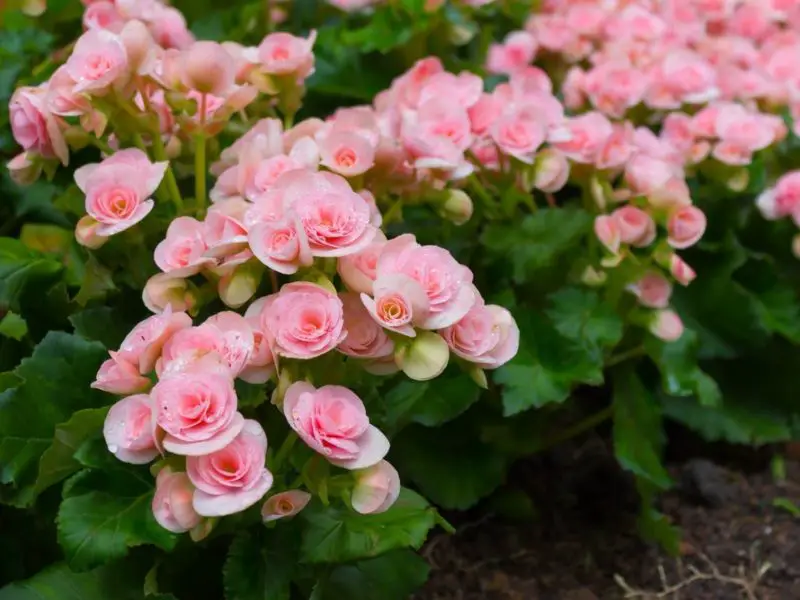
There are over 1,800 species of begonias, but they are commonly categorized into three main groups: fibrous, tuberous, and rhizomatous. Each type has unique characteristics that affect how and where it can grow.
Fibrous Begonias
Fibrous begonias are incredibly versatile and easy to care for, making them popular choices for bedding plants, hanging baskets, and shaded borders. Their leaves are typically small, glossy, and rounded, often tinged with bronze or red. They bloom prolifically throughout the warm season, producing small flowers in shades of white, pink, or red. Because they don’t require a dormant period, fibrous begonias are ideal for continuous growth in warm climates or as indoor plants. Regular deadheading and light pruning can keep them compact and encourage more flowers. They prefer bright, indirect light and well-draining soil with consistent moisture.
Tuberous Begonias
Tuberous begonias are prized for their dramatic, rose-like flowers, which can reach up to 4 inches across and come in a wide range of colors, including bi-colored and frilled varieties. These begonias thrive in hanging baskets, window boxes, and containers where their cascading blooms can be fully appreciated. They need cool, shady environments with high humidity and excellent air circulation to prevent mildew. After the blooming season ends in late fall, their foliage naturally dies back. The tubers should then be lifted, cleaned, and stored in a dry, cool place until the next planting season. With proper storage, tuberous begonias can rebloom year after year.
Rhizomatous Begonias
Rhizomatous begonias are grown more for their eye-catching foliage than for their blooms. Their leaves can be spiral-shaped, deeply lobed, or patterned with silver, red, purple, or metallic hues, making them popular in indoor collections and shaded garden beds. They grow horizontally through thick rhizomes that spread across the soil surface, helping the plant produce dense, bushy growth. Rhizomatous begonias thrive in stable indoor temperatures and high humidity. They should be watered when the top inch of soil dries out, and repotted when rhizomes begin to crowd the container. Although they do flower, the blooms are generally small and secondary to the plant’s striking leaf patterns.
How Climate Determines Whether Begonias Are Perennial
The climate zone in which you live greatly affects whether your begonias will act as perennials or annuals. In frost-free regions, begonias can thrive outdoors year-round. In contrast, colder areas require more effort to keep begonias alive beyond one season.
Warm Climates (Zones 9–11)
In warm, frost-free regions—such as coastal Southern and Western United States or tropical countries—begonias can be grown outdoors year-round as true perennials without fear of winter damage. They thrive in areas with afternoon shade, well-draining soil, and moderate humidity.
In these climates, you can plant begonias directly in the ground or grow them in large containers. With simple care—like applying a layer of mulch around the base to retain moisture and protect roots from temperature swings—begonias can bloom across multiple seasons. Fibrous begonias and rhizomatous begonias are especially well-suited for these conditions.
Popular varieties such as Begonia ‘Dragon Wing’ and Begonia semperflorens can stay green and healthy year-round and even spread over time if consistently watered and protected from harsh direct sunlight.
Moderate Climates (Zones 7–8)
In areas with mild winters that don’t experience severe frost—such as parts of the Southeastern U.S.—some begonia varieties can survive winter outdoors with the right protection.
Cane begonias (like Angel Wing begonias) can often make it through winter if shielded from cold winds and frost. Planting them near walls, under eaves, or in warmer microclimates within the garden can significantly improve their chances of survival.
Applying a thick mulch of dry leaves or bark, combined with a frost cloth on chilly nights, helps insulate plants during colder months. However, tuberous begonias in these regions should still be dug up after their foliage dies back in fall. Allow the tubers to dry thoroughly and store them in a cool, dry location for the winter, so they can be replanted in spring and bloom again.
Cold Climates (Zones 6 and Below)
In regions with harsh winters—such as the Midwest or Northern United States—begonias typically cannot survive outdoors and are best treated as annuals unless properly protected.
That said, you don’t have to lose your begonias at the end of the season. Many gardeners bring them indoors as houseplants once the weather cools. Keep them in a location with indirect light, stable temperatures, and moderate humidity to help them overwinter successfully.
For tuberous begonias, the common method is to dig up the tubers after the plants die back. Let them dry completely, then store them in a cool (around 45–50°F or 7–10°C), dry place. Once spring arrives, you can replant them to enjoy vigorous growth and vibrant blooms once again.
Another option is to take cuttings from your begonias before winter. Root the cuttings in small pots indoors to preserve your favorite varieties. This is an effective way to carry begonias through winter and avoid relying solely on outdoor survival.
How to Overwinter Begonias for Perennial Growth
If you live in a region where begonias are not winter hardy, overwintering techniques can help you keep them blooming year after year. There are specific methods for different types of begonias.
Overwintering Fibrous and Rhizomatous Begonias
To protect fibrous and rhizomatous begonias through winter, bring the plants indoors before temperatures drop below 50°F (10°C). Choose a location with bright, indirect light—such as near an east- or west-facing window. These types don’t go fully dormant, so they’ll continue growing slowly during winter. Water just enough to keep the soil barely moist and stop fertilizing until spring. Keep them away from drafts and heating vents to prevent stress. With minimal care, they’ll stay healthy indoors and be ready to thrive again outdoors once the weather warms.
Overwintering Tuberous Begonias
Tuberous begonias require a different approach since they go dormant in winter. When the foliage starts to yellow and die back in late fall, stop watering and carefully dig up the tubers. Gently remove any soil and allow them to dry in a cool, airy space for about a week. Once fully dry, store them in a cardboard box or paper bag filled with dry peat moss, sawdust, or vermiculite. Keep the tubers in a cool, dark, and dry place—ideally around 40–50°F (4–10°C). Check monthly for mold or soft spots. In early spring, pot them up indoors to give them a head start before planting outside after the last frost.
Extending the Bloom Season of Begonias
To enjoy continuous blooms from your begonias, whether perennial or annual, specific care practices can extend their flowering season.
Ideal Light and Temperature
To keep begonias blooming longer, providing the right light and temperature is essential. Most varieties thrive in bright, indirect light, making them perfect for spots with morning sun and afternoon shade. In hotter climates, shelter them from direct afternoon sunlight, which can cause leaf scorch and stress. For indoor begonias, a spot near an east-facing window often works best.
Temperature stability also plays a major role. Ideal daytime temperatures range between 60°F and 75°F (15°C to 24°C). When nighttime temperatures consistently fall below 50°F (10°C), many begonias—especially tender annual types—begin to decline. If you’re growing begonias in containers, consider bringing them indoors when a cold snap is expected. Similarly, during heatwaves, relocate potted begonias to a shaded, cooler area to prevent wilting and bud drop
Watering Techniques
Consistent watering helps begonias bloom reliably without stressing the plant. The key is to keep the soil evenly moist but never soggy. Overwatering can quickly lead to root rot, while underwatering may cause flower buds to drop prematurely. The best approach is to water when the top inch (2.5 cm) of soil feels dry to the touch.
For container-grown begonias, make sure pots have good drainage holes, and use a well-aerated potting mix. Avoid wetting the foliage when watering, especially in humid environments, as this can promote fungal diseases like powdery mildew and botrytis. Early morning watering is best, allowing leaves to dry out quickly.
Fertilizing for More Flowers
To prolong blooming, begonias need regular feeding with the right nutrients. During the active growing and blooming season—typically from late spring to early fall—apply a balanced, water-soluble fertilizer every 2 to 4 weeks. A 10-10-10 or 15-15-15 formula works well for overall plant health.
However, for better flowering performance, switch to a bloom-boosting fertilizer with a higher phosphorus content, such as a 10-30-20 mix. This supports more abundant and vibrant flower production. Always follow package instructions to avoid fertilizer burn, and flush the soil occasionally with water to prevent salt buildup.
Deadheading and Pruning
Regular deadheading—removing spent blooms—is one of the simplest yet most effective ways to encourage begonias to produce more flowers. By removing faded blooms, the plant redirects its energy toward forming new buds rather than seed development.
Also, prune leggy or weak stems to maintain a full, bushy shape. Pinching back tips of stems stimulates branching and creates a more compact plant with more flower sites. If you notice any yellowing leaves or damaged foliage, trim them off promptly to keep the plant healthy and attractive. Periodic grooming not only boosts flowering but also prevents the buildup of disease and pests.
Growing Begonias Indoors as Perennials
Many gardeners successfully grow begonias as houseplants, where they can live and bloom for many years.
Choosing the Right Varieties
When growing begonias indoors, selecting the right type is key to long-term success. Rhizomatous and rex begonias are top choices due to their colorful, textured foliage and ability to thrive in containers. These varieties generally stay compact and adapt well to lower light levels often found indoors. Look for cultivars labeled as houseplant-friendly or suited for indirect lighting, which tend to perform better without direct sun exposure.
Light and Humidity Needs
Begonias grown indoors flourish in bright, filtered light—ideally near an east- or west-facing window. While they can tolerate some shade, insufficient light may cause leggy growth or faded leaves. In addition to lighting, begonias benefit greatly from consistent humidity around 50–60%. Dry air from heaters or air conditioning can cause leaf edges to crisp, so using a humidity tray, grouping plants together, or running a small humidifier can help maintain healthy conditions.
Indoor Watering Practices
Proper watering habits are crucial for begonias kept indoors. Check the soil regularly and water only when the top inch feels dry. Overwatering is a common mistake and can lead to fungal issues or root rot, especially in decorative pots without proper drainage. Always empty saucers after watering to avoid stagnant water. During winter, reduce watering frequency as growth slows and evaporation rates decrease.
Potting and Repotting
For healthy indoor begonias, plant them in a light, airy potting mix formulated for indoor or tropical plants. A mix containing peat, perlite, and pine bark promotes drainage and prevents compacted soil. Repotting should be done every year or when the roots outgrow the container. When repotting, gently loosen the root ball and refresh the potting mix to boost nutrient availability. This helps maintain strong root health and encourages fresh foliage and blooming indoors.
Common Challenges in Growing Perennial Begonias
Pest Problems
Perennial begonias are vulnerable to a range of pests, especially when grown in warm, humid conditions. Aphids may cluster on new growth, sucking sap and causing deformed leaves. Spider mites thrive in dry air, leaving behind fine webbing and stippled foliage. Mealybugs can hide in leaf joints, while fungus gnats tend to affect container-grown begonias with overly damp soil. Early detection is key—check both sides of leaves and soil surfaces regularly. Treat infestations quickly with insecticidal soap, neem oil, or horticultural oil. For severe outbreaks, you may need to isolate or repot the plant to protect nearby specimens.
Fungal and Bacterial Diseases
Moisture-loving begonias are especially prone to fungal and bacterial issues if grown in poor air circulation or overly wet conditions. Powdery mildew shows up as a white, dusty coating on leaves, while botrytis causes gray mold and leaf decay. Bacterial leaf spot results in water-soaked lesions and yellowing foliage. Prevent problems by spacing plants adequately, trimming away crowded growth, and watering at the soil level to keep foliage dry. Avoid overhead watering, especially in the evening. Promptly remove and discard affected leaves—never compost diseased material.
Poor Flowering
If your perennial begonia isn’t blooming reliably, several factors could be at play. Insufficient sunlight is one of the most common causes, especially for outdoor begonias grown in deep shade. While begonias prefer filtered light, too little light will limit their flower production. Over-fertilization with high-nitrogen products can encourage lush foliage at the expense of blooms. Likewise, nutrient-poor soil or irregular feeding can result in weak or delayed flowering. Environmental stress—like sudden temperature drops or transplant shock—may also disrupt blooming cycles. Reevaluate light exposure, feeding practices, and plant health to encourage consistent, vibrant flowers.
Propagating Begonias for Perennial Success
Propagation is not just a cost-effective way to expand your begonia collection—it also ensures genetic consistency and allows you to preserve your healthiest, most vigorous plants. Depending on the type of begonia you grow, propagation can be done through leaf cuttings, stem cuttings, or dividing tubers or rhizomes.
Leaf Cuttings
Rhizomatous and rex begonias are particularly suited to propagation through leaf cuttings. Choose a mature, disease-free leaf and cut it cleanly from the plant. Then slice along the prominent veins on the underside, as new roots and shoots tend to develop along these cuts. Press the leaf segments flat against the surface of moist, well-draining potting mix. Cover the container with a clear plastic dome or bag to trap humidity and create a greenhouse effect. Place in bright, indirect light and maintain moisture. In about three to six weeks, you should see tiny plantlets forming along the vein cuts.
Stem Cuttings
Fibrous and cane-type begonias root easily from stem cuttings. Snip a 4- to 6-inch section of healthy stem with several nodes and at least two leaves. Remove any lower leaves to avoid rotting and dip the cut end in rooting hormone (optional but helpful). Insert the cutting into a sterile, moist propagation mix like peat and perlite or coconut coir. Place the pot in a warm location with indirect light and high humidity. Covering it loosely with a plastic bag can speed up rooting. Roots typically form within two to four weeks, after which you can transplant the cutting into its permanent container.
Dividing Tubers or Rhizomes
Tuberous begonias and rhizomatous types can be divided to produce multiple plants from one. This is best done in early spring while the plant is still dormant or just starting to wake up. Carefully remove the tuber or rhizome from the soil and slice it into sections using a clean, sharp knife. Each section should have at least one visible eye or sprouting point. Allow the cut edges to dry and callous over for a day before planting them in fresh, slightly moist soil. Start them indoors or in a greenhouse for a jumpstart on the growing season, ensuring warmth and bright, indirect light.
Best Practices for Post-Propagation Care
Once your begonias have been successfully propagated, giving them the right care will ensure healthy growth and vibrant blooms. Start by gradually acclimating the new plants to indirect sunlight. Avoid placing them in full sun immediately, as young roots are sensitive and may dry out quickly.
Keep the soil consistently moist but never soggy. Overwatering can lead to root rot, especially in young plants. Use a well-draining potting mix and water when the top inch of soil feels dry to the touch. Maintain high humidity, particularly for leaf and stem cuttings, by misting or using a humidity tray.
Fertilize lightly with a diluted balanced liquid fertilizer once the new plants show signs of active growth. Avoid heavy feeding early on, as this can stress developing roots.
Lastly, watch for pests and diseases. New begonias can be vulnerable to spider mites or powdery mildew. Isolate propagated plants from older ones until they’re well established, and inspect them regularly for signs of trouble. With the right post-propagation care, your new begonias will thrive as long-lasting perennials.
FAQ About Begonias Are Perennial Flowers
Are begonias considered perennials or annuals?
Begonias can be both, depending on the variety and climate. In tropical and frost-free regions, many types of begonias—including tuberous and fibrous varieties—are perennials that live and bloom year after year. In colder climates, however, they are typically grown as annuals unless they are brought indoors or overwintered properly.
Can begonias survive winter outdoors?
Most begonias are sensitive to frost and cannot survive freezing temperatures. In USDA zones 10 and above, they can be left outdoors year-round. In colder zones, tubers should be dug up and stored indoors, or potted begonias should be moved inside before the first frost.
How can I keep begonias alive year after year?
To keep begonias perennial, you can overwinter them indoors. For tuberous begonias, dig up the tubers after the foliage dies back, clean them, and store them in a cool, dry place. For fibrous or rhizomatous types, move the pots indoors and place them near a bright window, watering sparingly through the winter.
What are the easiest begonias to grow as perennials?
Rhizomatous begonias and wax begonias (fibrous) are often easier to maintain as indoor perennials. They adapt well to pots and don’t require dormancy like tuberous types, making them ideal for year-round growth with minimal care.
Do begonias rebloom every year?
Yes, if properly cared for, begonias can rebloom annually. Tuberous begonias typically go dormant in winter and start growing again in spring, while many fibrous and rhizomatous types can bloom continuously indoors with enough light and proper care.
Final Thoughts on Whether Begonias Are Perennial Flowers
Begonias are flexible, beautiful plants that can be grown as perennials or annuals depending on your location and how much care you’re willing to give them. In warmer climates, they thrive year after year outdoors. In cooler zones, they require indoor overwintering or storage techniques. Regardless of climate, proper care—including correct lighting, watering, and fertilization—can keep begonias blooming for many seasons. With a little effort, you can enjoy their vibrant color and unique foliage as long-lasting perennials in your home or garden.

